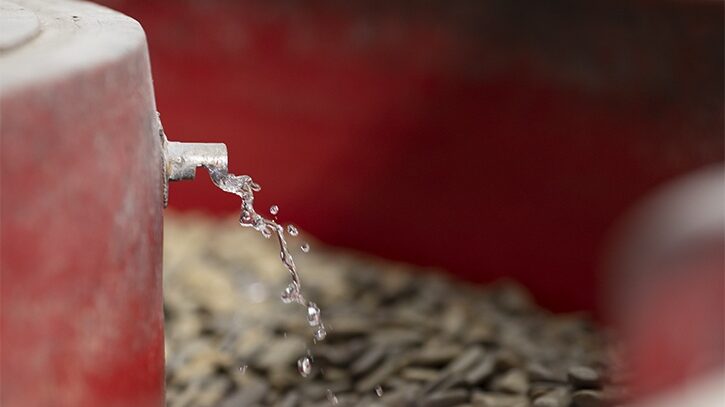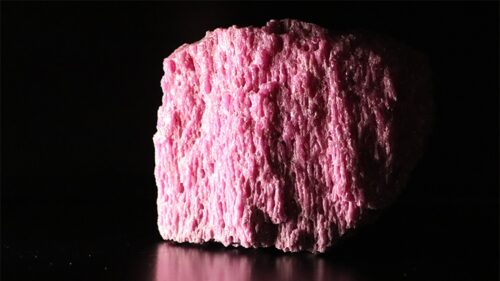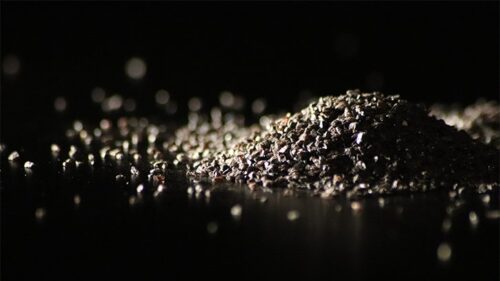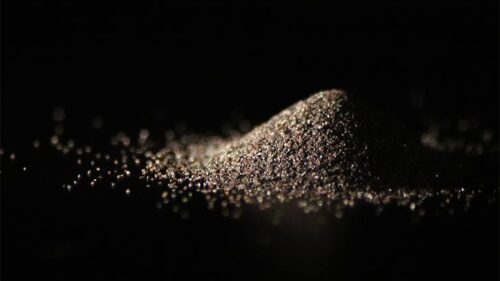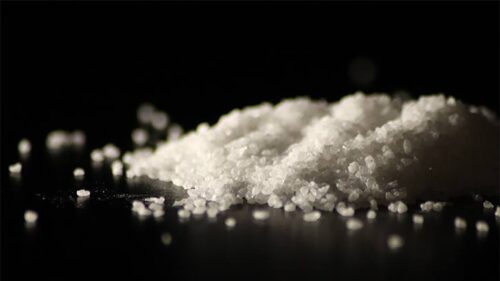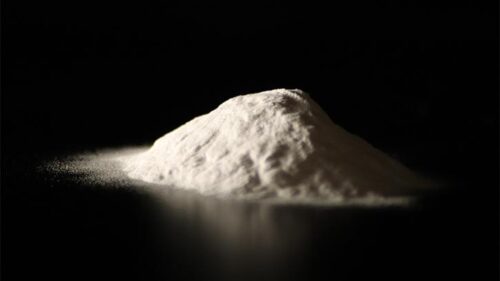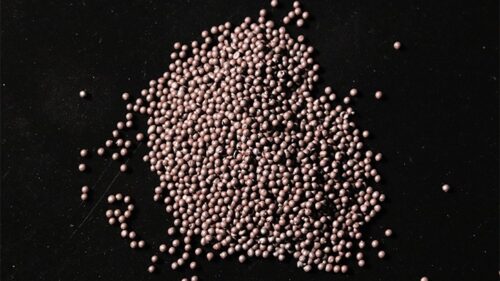Vibratory compounds are designed to work with the vibratory media to make the process efficient and productive. There are a number of considerations to take into account when selecting vibratory compounds. Two key considerations would be the material makeup of the work piece and the objective of the process.
The function of compounds within the mass is to keep your parts clean, keep the media clean and lubricate the mass itself as it travels through your machine. Compounds can also provide ancillary benefits such as rust protection.
Compounds are an integral part of the mass finishing equation. Burnishing and polishing are impossible without the correct compound to supplement the process. Even standard parts deburring applications are dependent on the correct compound.
Liquid compounds are the most commonly used compounds in vibratory mass finishing applications. Compounds can be manually added to a process or automatically added to the equipment using an integrated metering pump. Some liquid compounds can be recycled through a vibratory mass finishing system by using centrifuge wastewater systems.
Powder compounds can also be used, and quite effective, depending on the process requirements.
Incredible results have been achieved with unique mass finishing paste processes. Compound pastes are often used for process in which a high level of cutting may be required. Paste processes are also frequently used for polishing processes.
Vibratory mass finishing compounds provide a combination of performance components, but the main five goals of mass finishing applications tend to be:
Cleaning is one of the primary functions of vibratory compounds. Proper compound selection will clean and emulsify the oils or coolants from the parts, then remove it from the process channel. Compound is also critical by keeping the media clean and prevents glazing. Glazed media loses its cutting ability, which will increase processing time.
Deburring is a function whereby compound removes residue or contaminants on the work piece and allows the media to cut more efficiently. Deburring compound allows media to slide over the part, removing burrs. Without deburring compound, the media mass would not work as effectively.
Burnishing compound is utilized to brighten the appearance of the parts being processed. The enhanced appearance can be accomplished with many types of vibratory media however porcelain as well as steel media are typically used. Burnishing compounds add color and luster to the parts as they are processed.
Inhibiting properties will help prevent corrosion during the vibratory process. Typically, the concentration level of inhibitors is too low to provide any protection after the process is completed. With ferrous metals, other steps to dry the parts or apply higher concentrations of corrosion protection will need to be implemented to avoid further rusting post-process.


